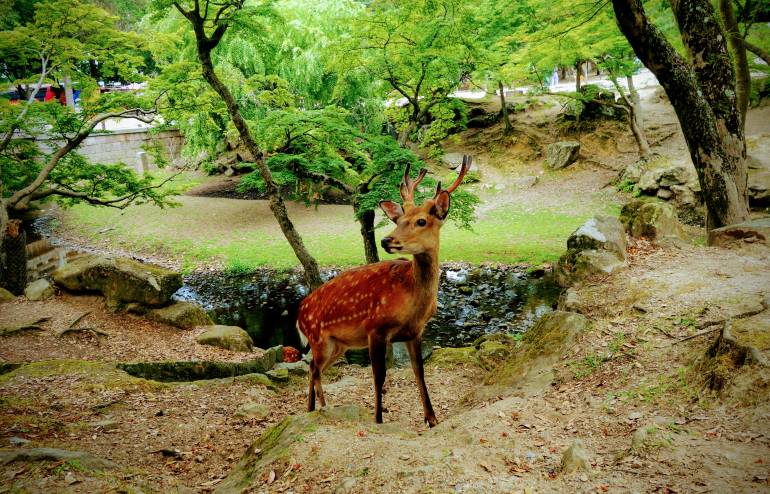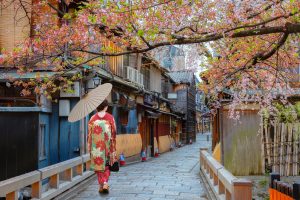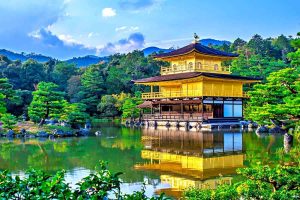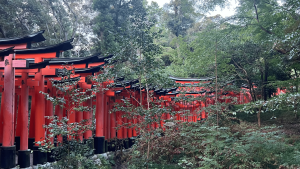How to Get from Kyoto to Nara by Train
Ever wondered how to get from Kyoto to Nara by train without getting overwhelmed by all the options? If you’re planning a trip to Japan, chances are Nara is on your radar — and for good reason. This ancient city, just a short hop from Kyoto, offers a peaceful escape filled with history, nature, and a very special group of residents: the friendly deer of Nara Park.
Thankfully, traveling from Kyoto to Nara by train is one of the easiest and most affordable day trips you can take in Japan. With frequent service, reasonable fares, and stations located near major attractions, it’s no surprise that thousands of travelers make this journey every day.
In this guide, I’ll walk you through the two best train options, break down the costs, and help you choose the right route for your style of travel — whether you’re using a Japan Rail Pass or just looking for the fastest way to meet a bowing deer.
Why Take the Train from Kyoto to Nara?
Traveling from Kyoto to Nara by train is not only convenient, it’s also the most practical way to go. The cities are just 35 to 50 kilometers apart, depending on the route you take, and the journey can be as short as 35 minutes. That makes Nara perfect for a half-day or full-day trip, especially if you’re based in Kyoto.
There’s no need to rent a car or figure out complex bus schedules. Trains between Kyoto and Nara run frequently throughout the day, with departures every 10–15 minutes during peak hours. You won’t need to make reservations in advance, and ticket prices are budget-friendly — which is great news if you’re watching your yen.
But here’s where many travelers get stuck: There are two major train lines that go from Kyoto to Nara, and they’re run by different companies. One is covered by the Japan Rail Pass, the other isn’t. One arrives closer to the main tourist attractions, while the other connects directly from Kyoto’s main station. So how do you choose?
Let’s break it down.
Overview of Train Options from Kyoto to Nara
There are two main train lines that connect Kyoto and Nara: the JR Nara Line and the Kintetsu Railway. Both are reliable, affordable, and easy to use, but each has its own advantages depending on your travel needs.
- The JR Nara Line departs from Kyoto Station and arrives at JR Nara Station. It’s fully covered by the Japan Rail Pass, making it the go-to choice for pass holders. The fastest option on this line is the Miyakoji Rapid, which gets you to Nara in about 45 minutes.
- The Kintetsu Railway departs from Kintetsu Kyoto Station, located within the Kyoto Station complex, and arrives at Kintetsu Nara Station, which is just a short walk from Nara Park, Todai-ji Temple, and other top attractions. This line is faster and drops you off much closer to where you’ll be sightseeing.
Here’s a quick look at how they compare:
| Feature | JR Nara Line | Kintetsu Railway |
| Travel Time | 45–70 mins (Rapid or Local) | 35–45 mins (Express or Limited Express) |
| Departure | Kyoto Station | Kintetsu Kyoto Station |
| Arrival | JR Nara Station (15–20 min walk) | Kintetsu Nara Station (5 min walk) |
| Fare | ||
| Japan Rail Pass | ✅ Fully covered | ❌ Not covered |
| Best For | JR Pass users, budget travelers | Those prioritizing speed and location |
How to Take the JR Nara Line
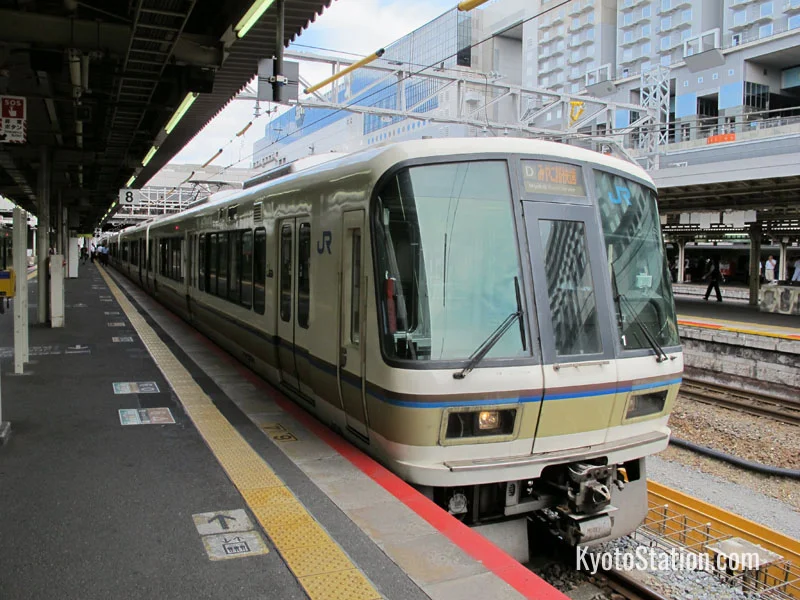
If you’re traveling from Kyoto to Nara by train and you’re holding a Japan Rail Pass, the JR Nara Line is the most logical choice. It’s easy to navigate, budget-friendly, and perfect for those staying near Kyoto Station. Here’s a complete, no-stress guide to taking the JR train to Nara.
✅ Step 1: Getting to Kyoto Station
Kyoto Station is the main transportation hub in the city, and you can get there by:
- Subway (Karasuma Line to Kyoto Station)
- City Bus (many routes stop at Kyoto Station)
- Taxi (easy if you’re carrying luggage)
Give yourself 10–15 extra minutes to find your way inside the station—it’s huge!
✅ Step 2: Finding the JR Nara Line
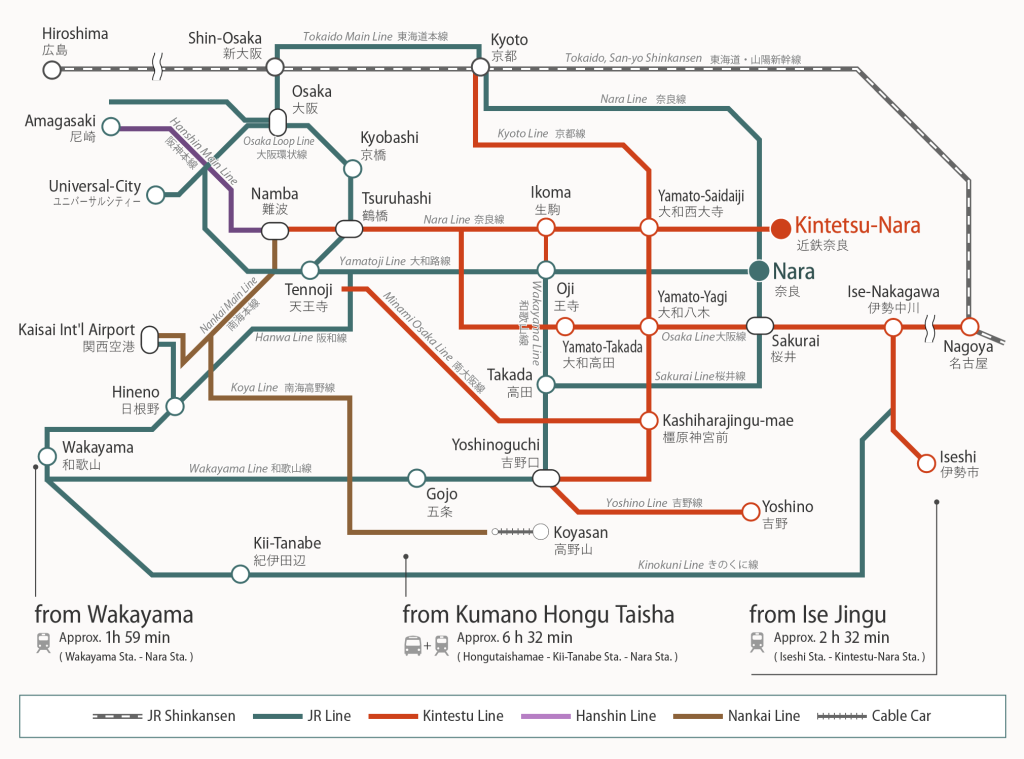
Once you’re inside Kyoto Station:
- Follow signs for JR Lines (JR West).
- Look specifically for signs pointing to the Nara Line.
- The platforms you want are usually Platform 8, 9, or 10, but always double-check the electronic display boards.
📌 Tip: These signs are clearly marked in English. If you’re unsure, just ask station staff by saying, “JR Nara Line?”
✅ Step 3: Buying Your Ticket
There are two options:
- With Japan Rail Pass: Show your pass at the manned gate (not the automatic one), and they’ll let you through for free.
- Without a pass: Buy a ticket at a JR vending machine or the ticket counter.
- Select “English”
- Choose JR Nara Station as your destination
- Fare is ¥720 (about $7 USD)
Alternatively, you can use an IC card like ICOCA to tap in and out.
✅ Step 4: Choosing the Right Train
There are two types of JR trains that run from Kyoto to Nara by train:
- Miyakoji Rapid – Direct and fast (about 45 minutes), ideal for tourists.
- Local trains – Stop at every station, taking up to 70 minutes.
Check the overhead boards above the platforms. The train type, destination, and time will be displayed in both Japanese and English. Look for “Nara (Rapid)” for the best option.
✅ Step 5: Boarding the Train
- No seat reservations needed.
- Board through any door and find an open seat.
- Luggage can be stored in the overhead rack or on your lap if space is tight.
Don’t forget to enjoy the view! The route runs through small towns and rice fields—a quiet glimpse of rural Japan.
✅ Step 6: Arriving at JR Nara Station
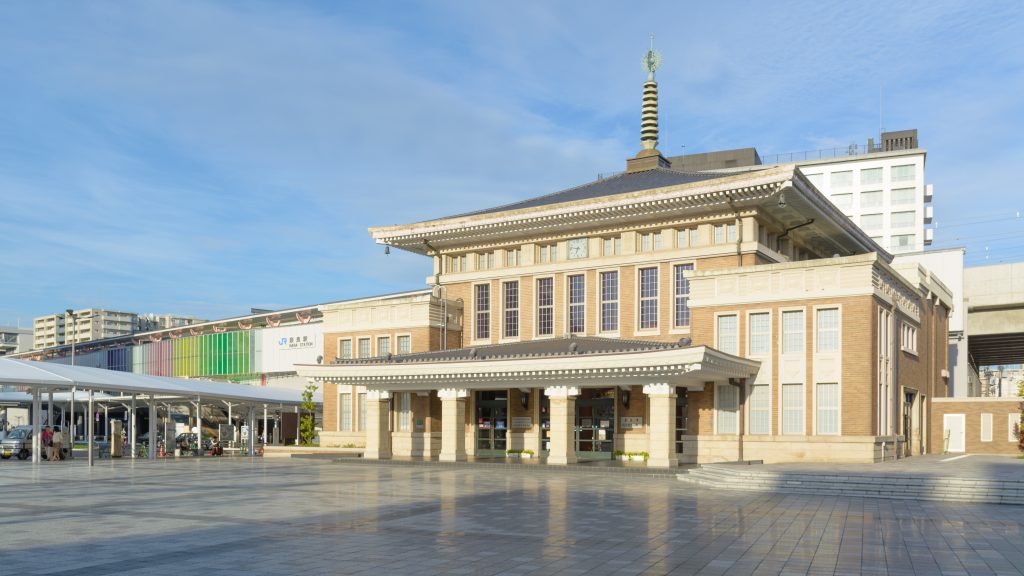
When you hear the announcement for “Next stop: Nara”, gather your things.
- Exit the train and follow signs to the East Exit.
- If you used a paper ticket, insert it into the gate on the way out.
- If you used a rail pass, show it to staff.
- If you used an IC card, just tap to exit.
From JR Nara Station, the main attractions are a 15–20-minute walk. You can also take a local bus or taxi if you prefer.
How to Take the Kintetsu Railway
If you’re not using a rail pass and prefer to get closer to Nara’s main sights, the Kintetsu Railway is hands down the best choice. It’s faster, smoother, and drops you just steps from Nara Park. Here’s exactly how to take the Kintetsu Line from Kyoto to Nara by train.
✅ Step 1: Getting to Kyoto Station

Even though Kintetsu is a different company from JR, Kintetsu Kyoto Station is located inside the same Kyoto Station complex.
Once you arrive at Kyoto Station:
- Head to the southwest side of the building.
- Look for signs marked “Kintetsu Line” or “近鉄線” in Japanese.
- You’ll see the Kintetsu ticket machines and gates in a separate area from JR.
📌 Don’t worry—it’s just a 3-minute walk within the station, and everything is labeled in English.
✅ Step 2: Buying Your Ticket
You’ve got two main train options on Kintetsu:
- Express/Local – No reservation needed. About ¥640 (~$6 USD). Takes 45 minutes.
- Limited Express – Reserved seats, more comfort, fewer stops. ¥1,230 (~$12 USD). Only 35 minutes.
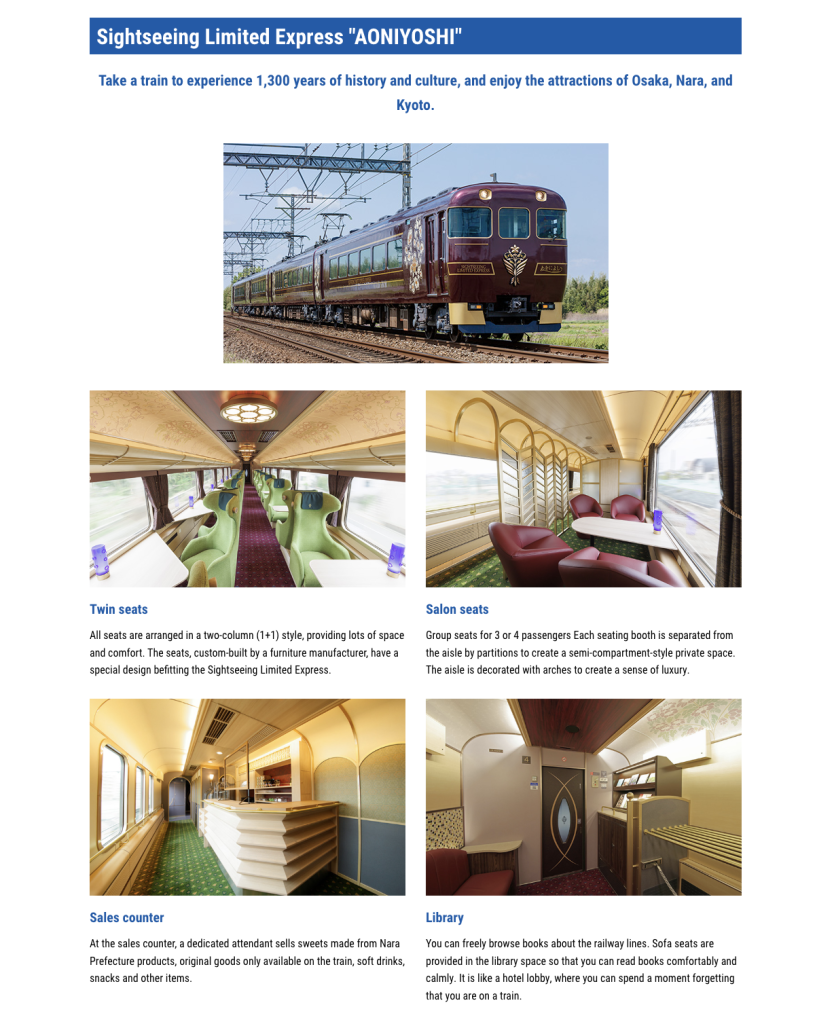
How to buy:
- Use the ticket machines (English available).
- Select Kintetsu Nara Station as your destination.
- Choose between Limited Express or Express.
- If you choose Limited Express, you’ll get a seat number and car assignment.
You can also use an IC card like ICOCA here too—just tap in and out.
✅ Step 3: Finding the Right Train
Look at the digital signboards above each platform. They’ll show:
- Train Type (Limited Express, Express, etc.)
- Destination (Nara)
- Departure Time
- Car Number (for reserved seats)
🎒 If you’re using the Limited Express, double-check your car number and seat number on your ticket.
✅ Step 4: Boarding the Train
- For Express trains, just board any car and grab a seat.
- For Limited Express, head to your assigned car and seat.
- Luggage can go overhead or at your feet.
The ride is smooth and quiet, especially on the Limited Express. Use the time to rest, plan your Nara itinerary, or just enjoy the peaceful view.
✅ Step 5: Arriving at Kintetsu Nara Station
This is where the Kintetsu option really shines.
- You’ll arrive at Kintetsu Nara Station, which is just a 5-minute walk to Nara Park and Todai-ji Temple.
- Exit through the gates and follow signs to the East Exit.
You’ll find:
- A tourist information desk right outside.
- Convenience stores, restrooms, ATMs, and coin lockers.
From here, you can:
- Walk straight to Nara Park (5 mins)
- Visit the deer first, then loop toward Todai-ji, Kasuga Taisha, and Isuien Garden
- Explore Naramachi (historic merchant district) nearby
Wrap-Up: Which Option Is Best for You?
- Use JR Nara Line if you have a Japan Rail Pass or want to depart directly from the main JR area.
- Use Kintetsu Railway if you want the fastest route and closest arrival to the sights.
No matter which you choose, getting from Kyoto to Nara by train is an easy, affordable, and scenic journey you’ll remember. All aboard!
Top Attractions to Visit After Taking the Train from Kyoto to Nara
Now that you’ve made the journey from Kyoto to Nara by train, it’s time to explore! Whether you arrive at JR Nara Station or Kintetsu Nara Station, you’ll be surrounded by the peaceful charm and ancient beauty that Nara is known for.
Nara is small enough to explore on foot, but packed with world-class attractions — from towering Buddhas and sacred deer to lantern-lit shrines and quiet garden paths. Here’s a look at the best spots to visit after your train ride.
🦌 1. Nara Park
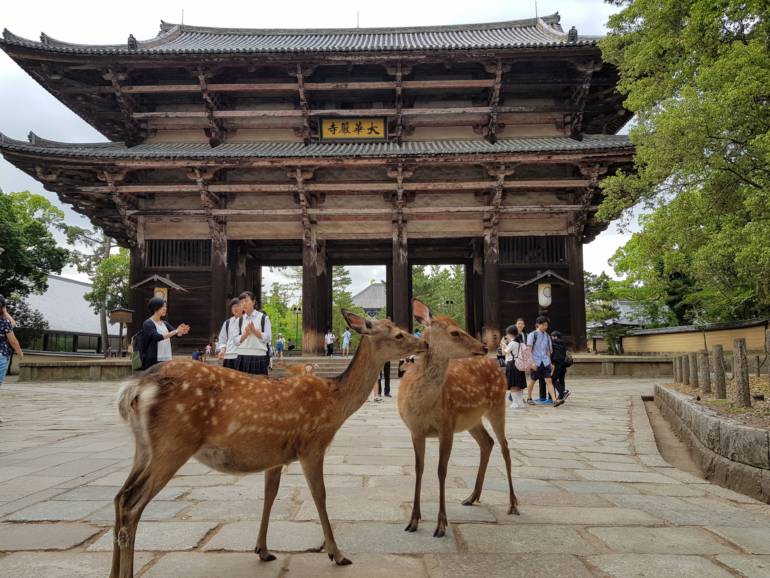
Your Nara adventure begins with Nara Park, the city’s most iconic spot. This sprawling green space is home to more than 1,000 free-roaming deer, considered messengers of the gods in Shinto tradition. They’ve become local celebrities, and many have even learned to bow in exchange for a treat!
You can buy “shika senbei” (deer crackers) from vendors in the park for about ¥200. But fair warning — once they see the crackers in your hand, the deer can get a little too friendly.
📍 Walking time:
- 5 minutes from Kintetsu Nara Station
- 20 minutes from JR Nara Station
🗿 2. Todai-ji Temple and the Great Buddha
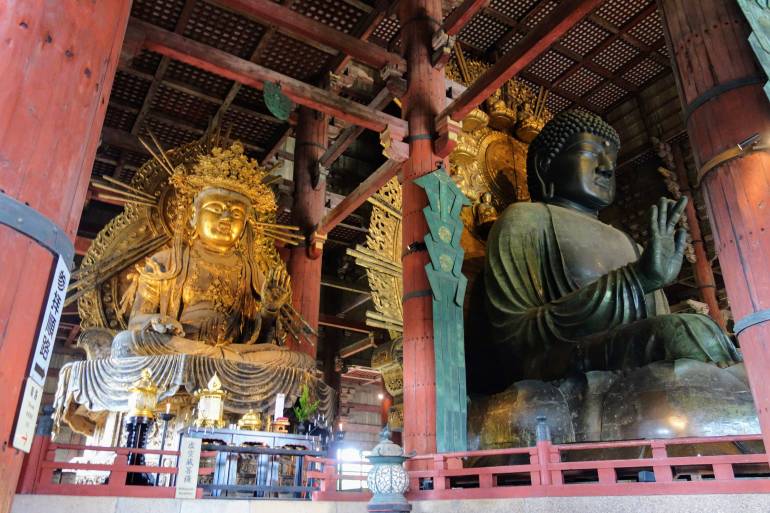
Inside Nara Park, you’ll find Todai-ji Temple, one of the most awe-inspiring places in Japan. This massive wooden structure houses the Daibutsu, or Great Buddha — a seated bronze statue standing over 15 meters tall. Just seeing it up close is worth the journey from Kyoto to Nara by train.
The temple complex also includes smaller halls and beautiful walking paths. Kids love crawling through the “Buddha’s nostril” — a hole in one of the pillars that’s said to grant enlightenment to those who can squeeze through.
🎫 Entry fee: ¥600 (about $4 USD)
🏮 3. Kasuga Taisha Shrine

Walk a little farther into the forested edges of the park, and you’ll reach Kasuga Taisha, Nara’s most important Shinto shrine. Famous for its stone lanterns lining the mossy paths and bronze lanterns hanging from the ceilings, it’s especially magical at sunset.
The shrine dates back to the 8th century and has been lovingly preserved for over 1,200 years. Even if you’re not deeply spiritual, the atmosphere here is peaceful and photogenic.
🎫 Entry fee: ¥500 for inner shrine
🏯 4. Kofuku-ji Temple
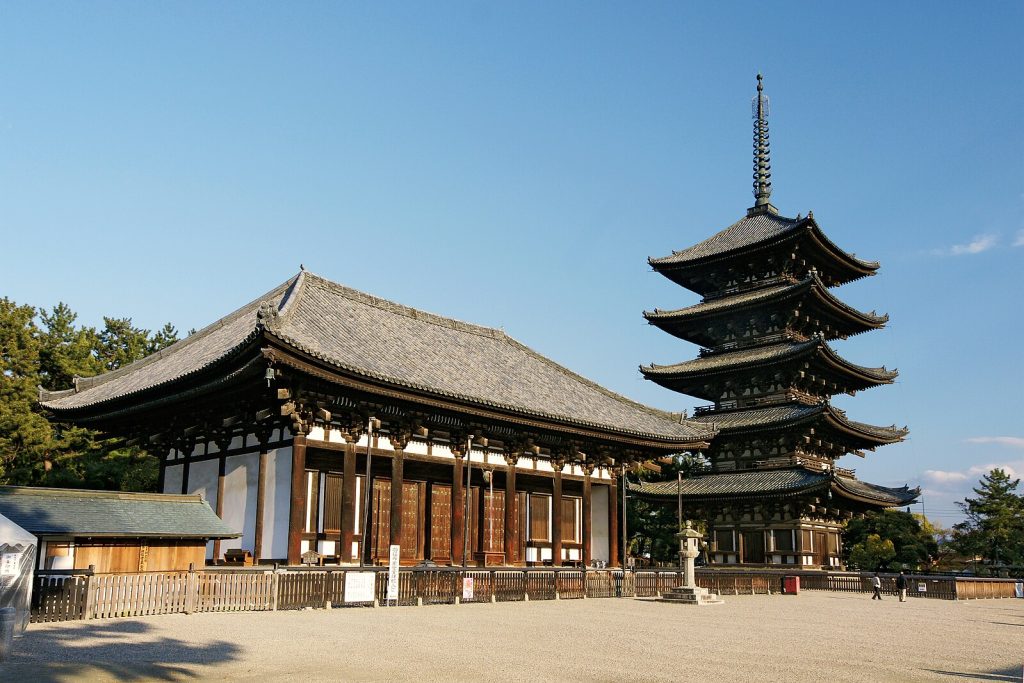
If you took the Kintetsu Line from Kyoto to Nara by train, you probably saw the five-story pagoda towering near the station — that’s Kofuku-ji Temple. Once one of the most powerful temples in Japan, it’s now part of a UNESCO World Heritage Site.
Don’t miss the Eastern Golden Hall and the National Treasure Museum, which holds some of the best Buddhist art in the country.
📍 Just a 3-minute walk from Kintetsu Nara Station
🎫 Entry fee: ¥700 for both hall and museum
🏘️ 5. Naramachi (Old Town)
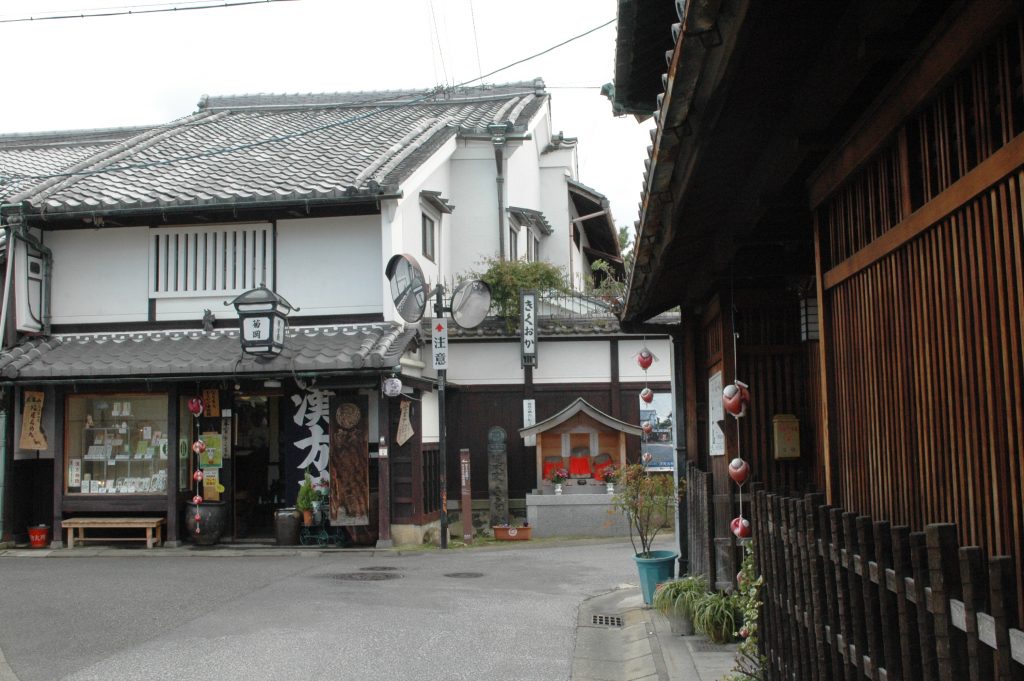
Step away from the temples and into Naramachi, a quiet district filled with preserved Edo-period merchant homes, craft shops, and traditional restaurants. It’s a great place to pick up unique souvenirs or enjoy a leisurely lunch.
You’ll find cafes serving matcha lattes, shops selling handmade washi paper, and even a few small museums that let you peek into life in old Nara.
📍 About 10–15 minutes from either station
🌳 6. Isuien Garden
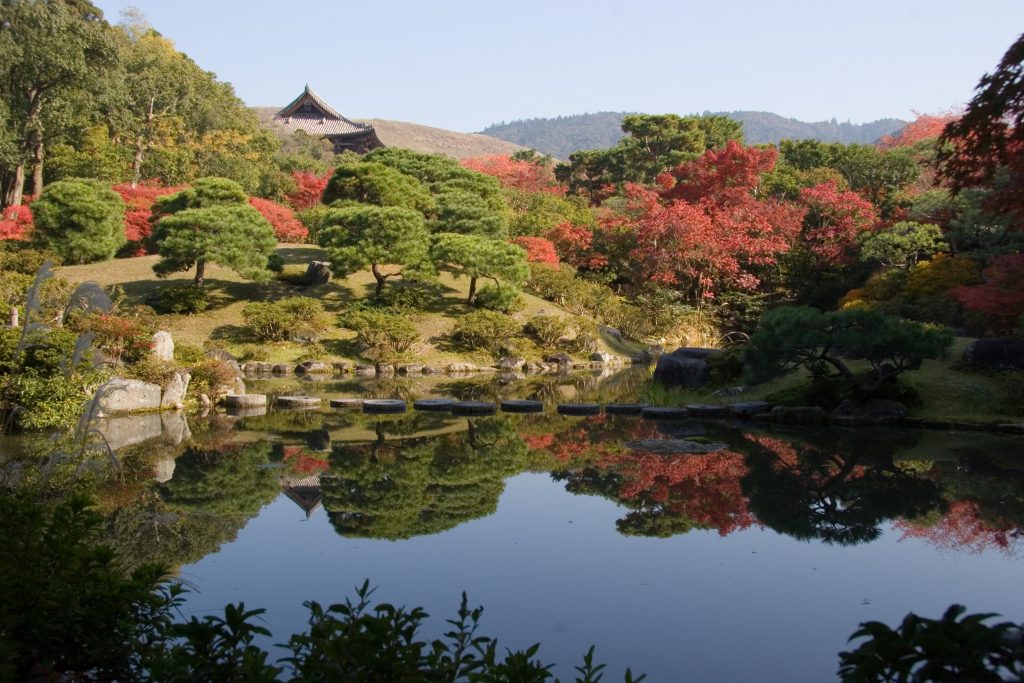
Need a peaceful break after exploring temples? Head to Isuien Garden, a beautiful Japanese landscape garden featuring ponds, tea houses, and views of Todai-ji’s Great South Gate. It’s less crowded than other sites and feels like a hidden gem.
🎫 Entry fee: ¥1,200 (includes entrance to the Neiraku Art Museum)
Tips for a Smooth Day Trip from Kyoto to Nara by Train
Making the trip from Kyoto to Nara by train is easy, but a few extra tips can make your day even smoother and more enjoyable.
🕒 1. Start Early to Beat the Crowds
The deer and temples are most peaceful in the morning. If you want great photos and a more relaxed experience, take an early train from Kyoto — aim to arrive in Nara around 9:00 or 10:00 a.m.
🎫 2. Use IC Cards or Buy Tickets in Advance
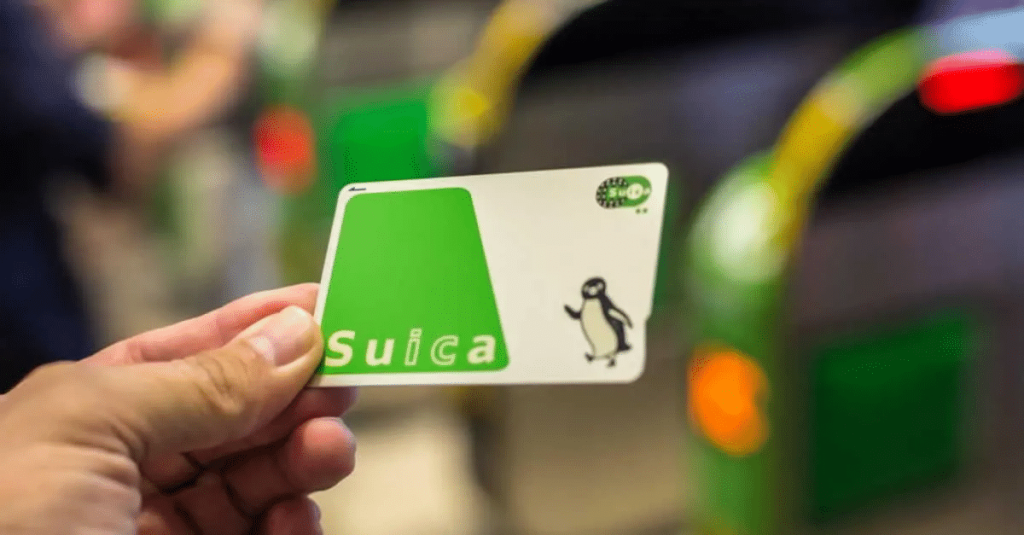
If you’re using ICOCA, Suica, or PASMO, you don’t need to worry about buying train tickets — just tap in and out. Otherwise, grab a round-trip ticket at Kyoto Station to save time on your way back.
Pro tip: If you’re planning to visit multiple Kansai destinations, consider a Kintetsu Rail Pass or a JR Kansai Area Pass, depending on your route.
🧳 3. Travel Light or Use Station Lockers
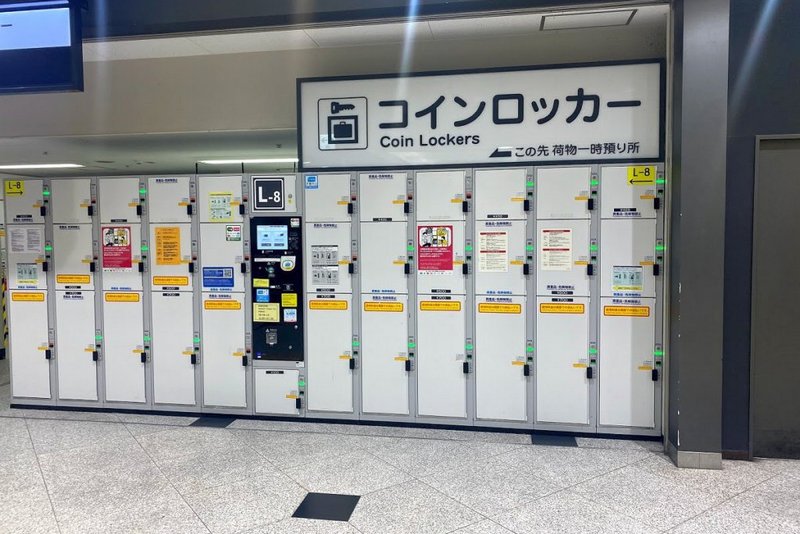
Most Kyoto hotels offer luggage storage or forward delivery services. But if you’re carrying bags, both Kyoto and Nara stations have coin lockers. Store your luggage before sightseeing to keep your hands free.
🚌 4. Use Local Buses or Taxis If You’re Tired
While walking is the best way to enjoy Nara, buses run regularly between the stations and major sites. A flat fare of ¥220 (about $1.50) makes it an easy backup plan. Taxis are also affordable for short distances in town.
☕ 5. Plan for a Relaxed Lunch

Nara is full of small restaurants and street food vendors near the park. Try local specialties like kakinoha-zushi (sushi wrapped in persimmon leaves), mochi from Nakatanidou, or a bento lunch from a convenience store.
Why the Trip from Kyoto to Nara by Train Is So Worth It
If you’re wondering whether the journey from Kyoto to Nara by train is worth adding to your Japan itinerary, the answer is a resounding yes.
In just 35 to 60 minutes, you can go from Kyoto’s busy station to feeding sacred deer, standing before a giant Buddha, and walking through a lantern-lit forest. It’s the kind of day trip that feels like a full adventure without the stress of a long journey.
What makes Nara special is its balance — rich in history but peaceful, full of sights but never overwhelming. The convenience of both train options (JR and Kintetsu) makes it easy to tailor the experience to your travel style, whether you value speed, cost, or location.
To recap:
- Take the JR Nara Line if you have a Japan Rail Pass and don’t mind a slightly longer walk to the main sites.
- Choose Kintetsu Railway if you want to arrive just steps from the deer and temples.
Either way, the process is simple, stations are clearly marked, and English signage is everywhere. As long as you follow the steps in this guide, your trip from Kyoto to Nara by train will be as smooth as it is memorable.
So pack your camera, grab some deer crackers, and hop on that train. Nara is waiting — and trust me, it’s even more magical than the photos.
